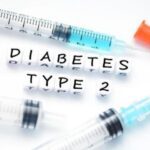-
Data Analytics Report based on close to 30 lakhs sample analysed for HbA1c test
-
East zone had the highest percentage of abnormal blood sugar levels (HbA1c ≥5%)
-
Women exercise better control over blood sugar (HbA1c <6.5%) than men across age groups and zones.
New Delhi, November 13, 2018 :
In what is being perceived a consequence of the relentless awareness campaigns on controlling blood sugar levels, a retrospective analysis done by SRL Diagnostics, India’s most doctor preferred diagnostics chain, of data around the diabetes blood test, HbA1c found that there is a decreasing trend of abnormal blood sugar across the age groups except 16-30 years. This shows that that there is an increasing trend of people exercising control over their blood sugar.
Showing that more and more people were aware of the need to keep track of their blood sugar levels, the SRL data showed that there has been an annual percentage increase at an average rate of 32% in the number of samples analyzed for HbA1c test each year between 2012 and 2017. Data of almost 30 lakh samples were analysed.
HbA1C Test is also called as glycosylated haemoglobin test. The A1C test is a new method to diagnose both diabetes and prediabetes. The test involves checking the average blood glucose levels for 2 to 3 months. When the results show A1C of 5.7 to 6.4%, it means the individual has prediabetes and has a higher than normal risk of progressing to diabetes. When the test results are 6.5% or more of A1C done from an accredited laboratory, it signifies the individual is diabetic. An advantage of this test is that there is no fasting involved and the food type consumed in the previous night or even in the morning before the blood draw does not affect its results.
The analysis further revealed that people from Eastern part of the country had the highest percentage of uncontrolled blood sugar (HbA1c ≥6.5%) as compared to the other parts of the nation. The data further showed that women had better control of blood sugar (HbA1c <6.5%) than men across age groups and zones. Also, people of age groups 46 to 60 and 61 to 85 years had the most cases of uncontrolled blood sugar (HbA1c ≥6.5%). Across the age groups except 16-30y there was a downward trend for uncontrolled HbA1c, signifying growing awareness about blood sugar control, and perhaps treatment.
Commenting on the prevalence of the disease, Dr BR Das, Advisor and Mentor – Research & Development from SRL Diagnostics said, “Diabetes is a chronic disease that occurs either when the pancreas does not produce enough insulin or when the body cannot effectively use the insulin it produces. Diabetes is of three types – Type 1, Type 2, and Gestational Diabetes (diabetes in pregnancy, which affects both the pregnancy and the baby’s health and could lead to Type 2 diabetes later). In Type 1 diabetes, the body is unable to make enough insulin. On the other hand, in Type 2, it is unable to use it efficiently to keep the blood sugar levels in the desired range. The Type 1 diabetes is less common than Type 2 diabetes with only 5% of the diabetics suffering from it.”
Over 425 million people are currently living with diabetes across the world and 1 in 2 people currently living with diabetes is undiagnosed. Diabetes can be expensive for the individual, family and organizations they are associated with. It impacts individual’s productivity. But early diagnosis and management is the key to prevent the complications of diabetes and achieve healthy outcomes. Therefore awareness of the signs, symptoms and risk factors for all types of diabetes are vital to help detect it early.
“Diabetes is to be blamed for various other health complications that include eye, heart and kidney problems. Often, people with Type 2 diabetes never know it, and in case of type 1 diabetes, one may not be aware of its existence until it becomes worse. A better understanding of diabetes in terms of its causes, symptoms, preventive measures and regular medical tests to diagnose diabetes can go a long way in helping one to stay protected against it, or at least, manage it better” added Dr. Das.
The rising prevalence of diabetes is driven by a combination of factors, including rapid urbanisation, sedentary lifestyles, unhealthy diets, tobacco use, and increasing life expectancy. Diabetes is a major cause of blindness, kidney failure, heart attacks, stroke and lower limb amputation. Healthy diet, regular physical activity, maintaining a normal body weight and avoiding tobacco use are ways to prevent or delay the onset of diabetes.






